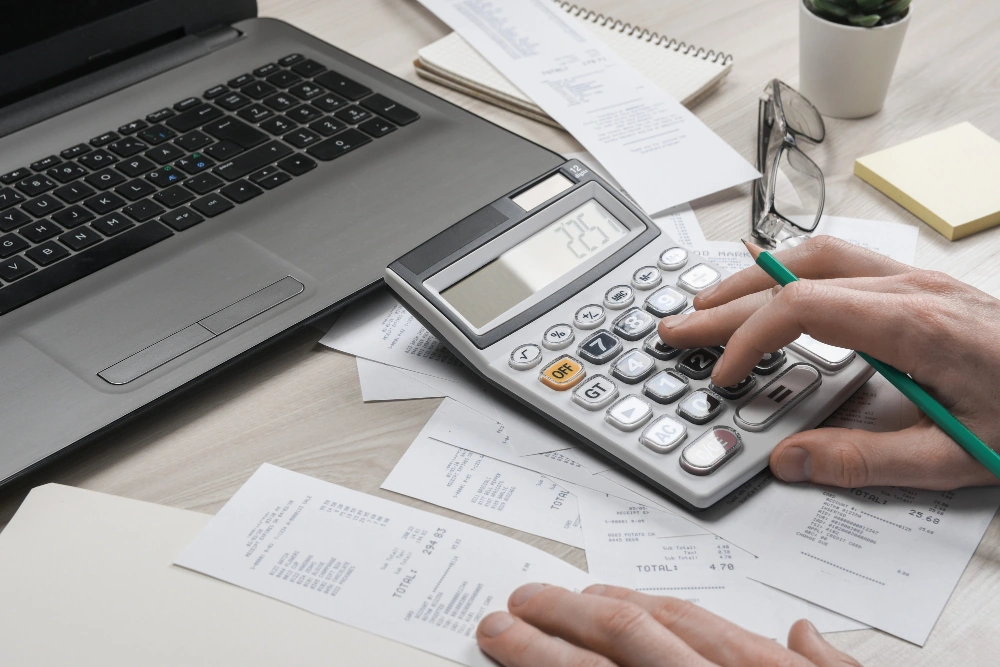Did you know that, on average, people lose 20% of their income due to untracked expenses? Keeping a personal financial record is the first step to taking control of your finances and achieving your financial goals.
Managing finances is not as difficult as it seems. There are various ways to handle your finances, and one of the best methods is by keeping a personal financial record. This record includes both income and expenses.
So, why is financial bookkeeping important? How do you create a personal financial record correctly? Let's find out in this article!
1. Why Keeping a Personal Financial Record is Important
1.1 Identifying Priority Expenses
By maintaining a personal financial record, you can clearly see which expenses are priorities and which can be postponed. No more wondering where your money went or feeling like your paycheck just disappeared. This record helps you stay disciplined in tracking and managing your income and expenses.
1.2 Controlling Spending Habits
We often don't realize that we spend money on things that are not essential. By recording all expenses, you can be more mindful of your spending habits. Before checking out items from your e-commerce wishlist, you can review whether they are truly necessary or just impulsive buys.
1.3 Planning Investments
Financial records also help you plan investments. By having a clear understanding of your financial situation, you can start setting aside funds for investments such as gold, stocks, mutual funds, or real estate. Besides investing, you can also save money regularly. The amount doesn't have to be large—what matters is consistency.
2. How to Create a Personal Financial Record

Here are practical steps to create an effective personal financial record:
2.1 Set Your Goals
Determine why you want to keep a financial record. Is it to manage daily expenses, save for short-term purchases, or plan your finances for the next 5-10 years? Having clear goals will keep you motivated to maintain financial records consistently.
2.2 Track Your Cash Flow
Observing your cash flow is the next step in creating a financial record. Identify your monthly income and where your money goes. This will help you determine if there are expenses that can be reduced.
2.3 Utilize Your Smartphone
If you have limited time, take advantage of financial tracking apps on your smartphone. Look for apps with essential features such as automatic expense categorization, payment reminders, and monthly reports. Some popular apps even offer bank account synchronization for automated tracking. Using an app can help you stay disciplined in managing your finances.
As an alternative, you can use the notes feature on your smartphone. Manually create a checklist of your daily and monthly income and expenses and monitor it consistently.
2.4 Use Spreadsheets
If you prefer a more organized and modern approach, spreadsheets can be a great option. You can use Google Sheets or Microsoft Excel to create a simple table to record income, expenses, and remaining balance each month. Using spreadsheets makes financial records look neat and easy to modify.
2.5 Keep a Physical Notebook with a Creative Design
On the other hand, if you prefer a traditional method and enjoy personalizing your records, you can purchase a physical notebook. Many notebooks come with attractive designs. You can use different colors for each expense category to make it visually appealing. This can also make financial recording more enjoyable.
2.6 List Your Assets
Take time to review and calculate all your assets, including monthly income, gold, investments, or other valuable possessions. By listing your assets, you can determine your total net worth.
2.7 Don’t Forget Your Debts
In addition to assets, if you have debts, track all of them, including mortgages, pay-later services, and credit card installments. Recording your debts allows you to calculate your net income accurately. This will also help you develop a repayment strategy to clear debts quickly without affecting your other financial allocations.
2.8 Create a Cash Flow Report
Each month, try to generate a simple report on your income and expenses. This will help you assess whether your financial situation is healthy or needs improvement. If your expenses are too high, you can gradually reduce them in the following month. A healthy financial state means your expenses do not exceed your monthly income.
3. Example of a Personal Financial Record
Now that you know how to create a personal financial record, let’s look at an example of a financial record format. You can use and modify this example to fit your needs.

Image Source: DepositBPR by Komunal
That’s all about the importance of financial management and how to create a personal financial report. Essentially, keeping personal financial records is crucial, especially if you struggle with managing your finances. By maintaining regular records, you will be able to identify your biggest expenses and find ways to minimize them.
We hope this article helps you in managing your personal finances! Keeping financial records can support important needs such as business capital, vacations, or your child’s education. With good planning and consistent tracking, you can achieve your financial goals.
For more financial insights, especially regarding financing options that help realize your dreams, visit BFI Finance!
BFI Finance is licensed and supervised by the Financial Services Authority (OJK).
#SelaluAdaJalan with BFI Finance.






